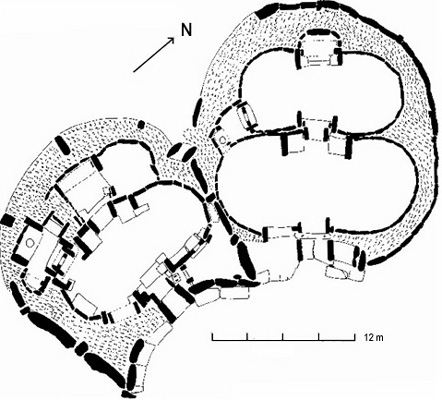Plan Of The Temple Complex At Mnajdra.

Article by Bernadette Flynn who is doing research on this site, but more specifically research into knowing. The reconstruction of ancient ruins is the basis to explore an approach to knowing through the body. Embodiment. All this reminds me of the ways of know I’ve been researching. Theatre, dance, phronesis.
Flynn-final – Powered by Google Docs:
The principle purpose of this paper is to investigate how simulation spaces in cultural heritage can incorporate somatic knowledge i. An understanding of the past that starts with the somatics of the sensing, feeling mobile body is a radical departure from traditional approaches to digital cultural heritage where the corporeal dimension has been absent. To date simulations of cultural heritage have largely focused on processual archaeological accounts of the past to inform design practice. This has resulted in an emphasis on mathematically accurate representations of the past. While these accurate representations simulate material culture to a high degree of technical sophistication they fail to take account of the sensing body and thereby de-emphasise significance aspects of end user engagement.
This paper seeks to address this imbalance by investigating the application of somatic knowledge to the creation of an interpretative digital cultural heritage space. Using the framework of interpretative archaeology consideration is given to phenomenologicaly informed accounts of prehistory that focus on embodied experience of the built environment. This paper identifies approaches in the work of pheneomenological archaeology that can usefuly interpret the spatiotemporal characteristics of an archaeological site in relation
to living moving bodies. Broader discussions of embodiment are framed from the perspective of the cultural heritage visitor as end user. The paper considers users subjectivity as in dialogue with the spatial aesthetics of the landscape morphology, and outlines how interaction design can be mobilized to explore an embodied encounter with architectural remains
